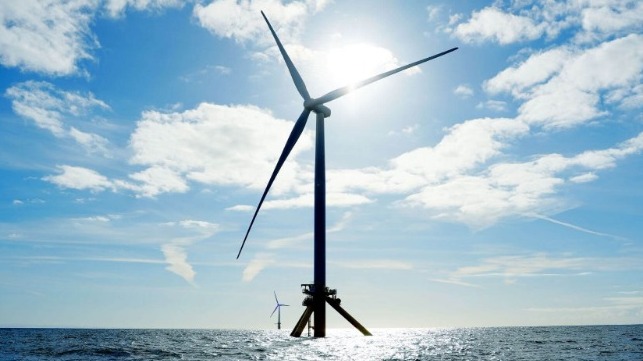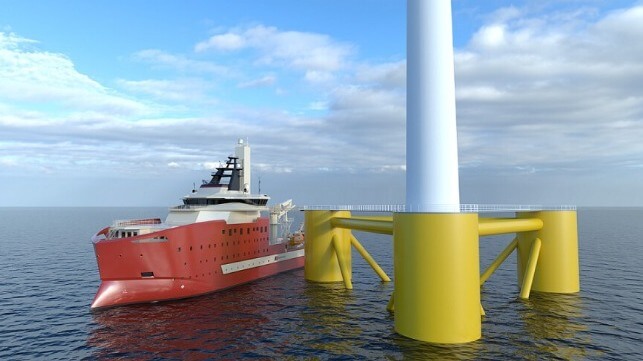Norwegian Center to Host Three Floating Wind Demos to Advance Technology

Three companies have signed up with Norway’s Marine Energy Test Center for demonstrations of floating wind turbine technologies. The center highlights it is the only place in the world for testing on a large scale and the aim is to reduce the costs of floating offshore wind technology which is viewed as critical in the next phase of expansion of offshore renewable energy.
Many locations around the world, including Norway, Japan, and the West Coast of the United States, will require floating technology to advance offshore wind energy power generation. The seabed topography and water depths require floating installation to harness the energy potential of these locations. However, the technology remains costly and has only been applied in a few advanced sites.
The METCentre is located off the West Coast of Norway and is already hosting projects including the Hywind 2.3 MW demo and a 3.6 MW Siemens Gamesa turbine as part of the TetraSpar platform. Last year the center received approval to expand its test area with up to four new test sites. The three new agreements call for the demonstration of floaters of 15 MW or greater capacity turbines. Detailers were not released because the next test projects are still competing for funding from Norway’s ENOVA a state-sponsored initiative to advance renewable energy projects.
“This is very good news for innovation in floating offshore wind,” said Arvid Nesse, head of METCentre and Norwegian Wind Offshore, a trade group to support the development of the wind supply chain. “We are the only place in the world ready with permits to test projects of this capacity. If we are to get floating wind offshore started in Norway without further delays, it must begin at METCentre.”
Nesse highlights that the goal is to gain important knowledge from both the construction and operation of these large-scale wind turbines. They believe this will help the industry to realize important cost savings and also help Norway to develop leadership in the sector.
They also highlight that the test location is close to the Utsira Nord area, which the Norwegian government has designated as one of the country’s first offshore wind sites. Norway completed an auction for a fixed-bottom location but delayed the tender for Utsira Nord to 2025. Details are expected to be announced shortly for the tender.
The Norwegian government in its 2025 budget plans to provide $3.3 billion in subsidies in a scheme to help support the development of floating wind technology. Floating wind is expected to play a critical role in the government’s target to allocate 30 GW of offshore wind power production by 2040.
Partnership to Design Next-Generation SOV for Floating Offshore Wind Ops

A new industry collaboration is being launched by North Star, Vard, and others to solve the challenge of delivering high-performance operations and maintenance ships tailored for floating offshore wind farms. They look to leverage the collective expertise to develop a new generation of vessels better suited to the future of offshore wind operations.
According to the partners, as offshore wind moves into deeper waters with floating wind turbines located far from shore, the sector faces significant logistical and operational challenges that must be addressed efficiently and cost-effectively. While the industry has demonstrated the ability to safely complete transfers from traditional SOVs to floating wind platforms, they believe there is room for improvement in transfers where both the vessel and platform are dynamic and in motion.
North Star has signed a memorandum of understanding with MO4, Principle Power, SMST, VARD, and Voith Group, to establish a dedicated working group of industry experts to help fast-track the design and testing of a new SOV concept. Together, the six organizations have committed to developing a detailed, high-performance ship design to meet the needs of commercial-scale projects, such as the 17GW of floating projects awarded in the ScotWind leasing round.
“Floating offshore wind presents both challenges and opportunities, and through this collaboration, we can innovate, and design a solution specifically tailored for GW-scale projects,” said Andrew Duncan, North Star’s renewables & innovations director. “Our goal is to create an innovative, best-in-class ship design that supports the rapid expansion of floating wind technology. By pushing the boundaries of what's possible, we can ensure that our future SOVs deliver the highest levels of safety, efficiency, and operational flexibility, ultimately paving the way for a more sustainable energy future.”
They believe there exists an opportunity to optimize the transfer operations by developing SOVs that will operate under a long-term contract that specifically addresses the local challenges and the requirements of floating wind project operators. The collaboration seeks to capitalize on this opportunity by delivering an SOV design that sets a new industry benchmark for safety, performance, and efficiency.
North Star which provides support services for the UK’s offshore wind and oil and gas markets will be joined by VARD, a major global designer and specialized vessel shipbuilder which is a leader in SOVs, and Principle Power, which has been developing offshore wind platforms for 15 years. They will add emerging technology by involving Digital twin and AI decision support software firm MO4 as well as Voith Group, which will contribute propulsion options, and offshore equipment design and build specialist SMST.
“The detailed ship design will be put to the test through rigorous workability assessments, ensuring that it meets the highest standards of performance, safety, and efficiency before being implemented in future floating wind projects,” said Duncan.
No comments:
Post a Comment